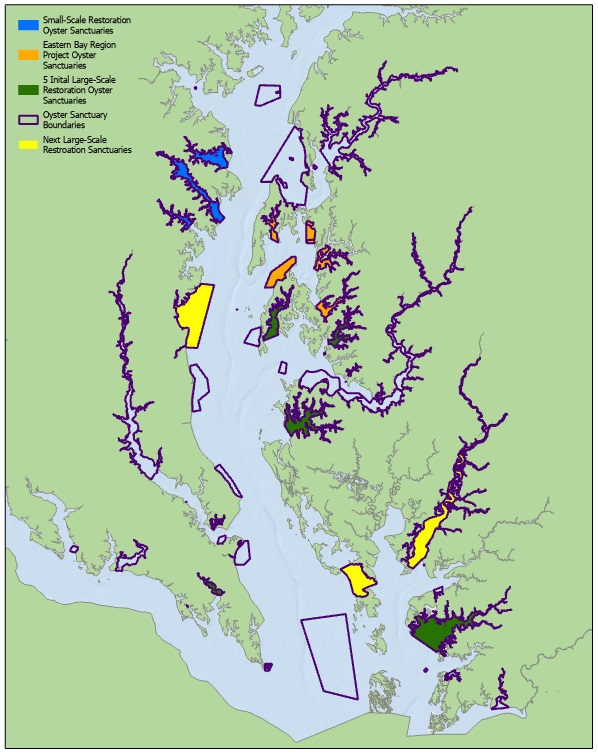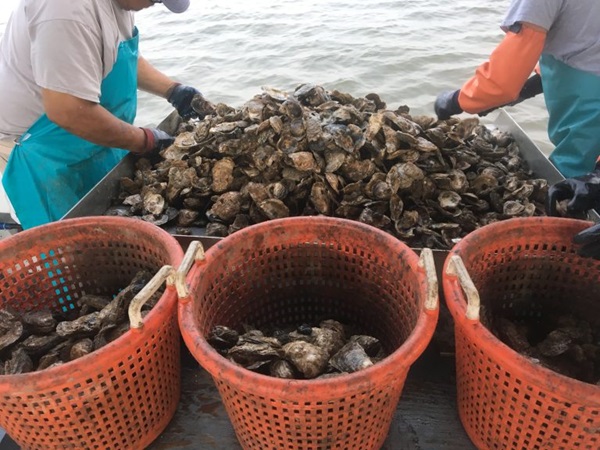BALTIMORE, MD—The Maryland Department of Natural Resources has announced the selection of three new sites for large-scale oyster restoration in the Chesapeake Bay. This marks the beginning of the state’s next phase of major oyster restoration efforts.
The new sanctuaries will be located in Herring Bay, the Nanticoke River, and Hoopers Strait. These sites were chosen based on their potential for a self-sustaining oyster population, economic efficiency, and working in different salinity zones to mitigate disease risk.
The Nanticoke River sanctuary will be the first to undergo restoration, with work expected to begin in the spring and summer of 2025. The Nanticoke River sanctuary will be a smaller site, encompassing approximately 175 acres. Restoration at Herring Bay or Hoopers Strait will follow in 2026, with the final site to be determined based on further planning and study. The Hoopers Strait restoration sanctuary is expected to be comparable in size to the state’s three largest existing restoration sites, ranging from 348 to 455 acres. Herring Bay could potentially become the state’s largest restoration effort to date, surpassing these existing sanctuaries.
These new restoration projects are part of DNR’s Four Point Oyster Sanctuary Plan (PDF), developed to guide future oyster sanctuary restoration and management in the state. The plan focuses on monitoring existing sanctuaries, evaluating underperforming sanctuaries, continuing and expanding oyster restoration in sanctuaries, and developing strategies to connect oyster restoration to watershed restoration.
The announcement comes as the department concludes its initial restoration of the “big five” sanctuary sites required by the 2014 Chesapeake Bay Watershed Agreement. Initial restoration is complete at four sanctuaries, with work on the final site in the Manokin River scheduled for completion by 2025.
“These three large-scale restoration sanctuaries represent a new chapter for oyster restoration in Maryland,” said DNR Secretary Josh Kurtz. “We’ve had tremendous success with our existing restoration sanctuaries, and we’re excited to build on that achievement and keep up the momentum for oyster recovery in the Chesapeake Bay.”
Oysters are a keystone species in the Chesapeake Bay ecosystem, providing critical water filtration services and supporting a valuable fishery. However, their populations have declined significantly from historic levels due to overharvesting, disease, habitat degradation, and reduced water quality.
Sanctuaries are areas where oysters can grow undisturbed, enhancing the overall breeding population and building reefs that provide crucial habitat for many other Bay species. These sanctuaries are permanently closed to harvest, except on aquaculture lease sites.
The Maryland General Assembly committed $2 million for oyster restoration per year in Eastern Bay in 2024 and 2025, with $1 million for spat-on-shell plantings in sanctuary areas and $1 million for shell and spat-on-shell plantings in public fishery harvest areas annually.

This article was written with the assistance of AI and reviewed by a human editor.
Photo via Maryland DNR


